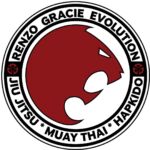What is Hapkido?
Hapkido, or “the way of coordinated power”, is a Korean martial art that is relatively new compared to other Asian traditional martial arts. The art only recently emerged out of Korea in the 1950s, when the founder, Choi Yung Sool, brought the art to the spotlight. Although there is not a clear history of how Hapkido came to exist, what we do know is that Choi Yung Sool spent the first half of his life living Japan. When he returned to Korea, he came back with techniques from Daito-Ryu Aiki-jujutsu, the father of the art of modern day Aikido.
Hapkido underwent further evolution through the implementation of kicking techniques from indigenous Korean martial arts, such as Taekkyon and Tang Soo Do. The wide variety of kicks in Hapkido makes it distinctly Korean. Though other Korean martial arts have kicks that appear to be similar to many of the kicks found in Hapkido, the signature circular motion makes it unique. In contrast to the other Korean arts, Hapkido utilizes a wide variety of low, hooking, or sweeping kicks that are used to displace an opponent’s balance. Though it is true that Hapkido and Aikido share the same origins, Hapkido is its own unique style and distinct from Aikido.
What differentiates Hapkido from other styles?
Hapkido is a fully comprehensive fighting style, which contains both long and close range fighting techniques. At long ranges, Hapkido is known for its powerful jump kicks, spin kicks, and punches. Within closer fighting ranges, the use of pressure point strikes, joint locks, low kicks, sweeps, and throws are employed. The most distinguishing aspect is that Hapkido emphasizes circular motion, non-resisting movements, and control of the opponent. Practitioners seek to gain advantage through footwork and body positioning to employ leverage, avoiding the use of strength against strength. This is why Hapkido practitioners can vary greatly in size, age, and weight, yet, still achieve a high level of mastery of the techniques.
How does Hapkido work as a self defense?
On a “hard-soft” scale, Hapkido falls somewhere in the middle. For the most part, Hapkido is mostly a softer art that focuses on going along with the energy being exerted by the opponent. By being non-resistive, working off angle, and not allowing energy to flow into oneself, Hapkido seeks to redirect that energy back to the opponent or let that energy unbalance the opponent in order to take control. The hard aspect of Hapkido tactics include using footwork and a series of kicks and hand strikes to bridge the distance with an opponent. Then, it is used to immediately control the balance of the opponent through manipulation of an available joint, pressure point, or both.
Not only is Hapkido useful for defense against striking attacks, but the art is extremely useful in situations where the opponent grabs one by the wrist, shoulders, hair, clothing, as well as other holds. The same holds true for opponents that may have a weapon. As one progresses through the ranks, they learn how to employ and defend against various weapons. All these applications are often used by many self-defense systems for training law enforcement agencies, military, and private security to subdue criminals, aggressors, and other assailants.
What other benefits does Hapkido training provide?
In addition to learning kick, punches, and throws, Hapkido practitioners also learn to have good body awareness (either on the ground or in the air) and knowledge of how to “break” falls in order to avoid injury during training, or in real life situations where one is pushed, thrown, or accidentally falls. Also, meditation is another important aspect of training for maintaining internal balance and the development of internal energy, known as “ki”. Hapkido training is very rigorous and demanding. However, strength is not a prerequisite of Hapkido. All the strength and fitness necessary to perform the techniques develops during training.
What can I expect from training at Evolution vs other local martial arts schools?
- We constantly continue the evolution. At EVOMAA, we do not believe that one martial art is better than another. What we do believe is that the best martial artists are those that can adapt, or evolve, to be able to face any type of threat. The owners of EVOMAA have a combined total of nearly 40 years of training and close to 20 years of teaching experience under the pioneer of “Hapkido Blend”, Master Fariborz Azhakh. “Hapkido Blend” incorporates the fundamentals of traditional Hapkido and blends in the most effective elements from other styles, such as Brazilian Jujitsu, Filipino Kali/Eskrima, and Ukidokan kickboxing.
- We have the passion. Our desire to teach and train the martial arts is not our job; it is what we love to do. We have dedicated more than half our lives to learning every aspect of our art, and we want to share the gift of the legacy that has been passed onto us. We will teach you with the greatest attention to detail in relation to technique and execution. This allows us to preserve the art the way it was taught from its inception.
- We do not sell black belts. The rank of black belt is not something can be bought from our school. Unfortunately, there are a number of martial arts schools out there that push students along the ranks for monetary gain. This does not benefit the student or the reputation of the school. The rank of black belt is very sacred, and has to be earned with many hours of training, as well as the student proving that they are of sound mind and body. We are not just looking to produce great martial artists, but also future leaders, both inside and outside of EVOMAA.
















